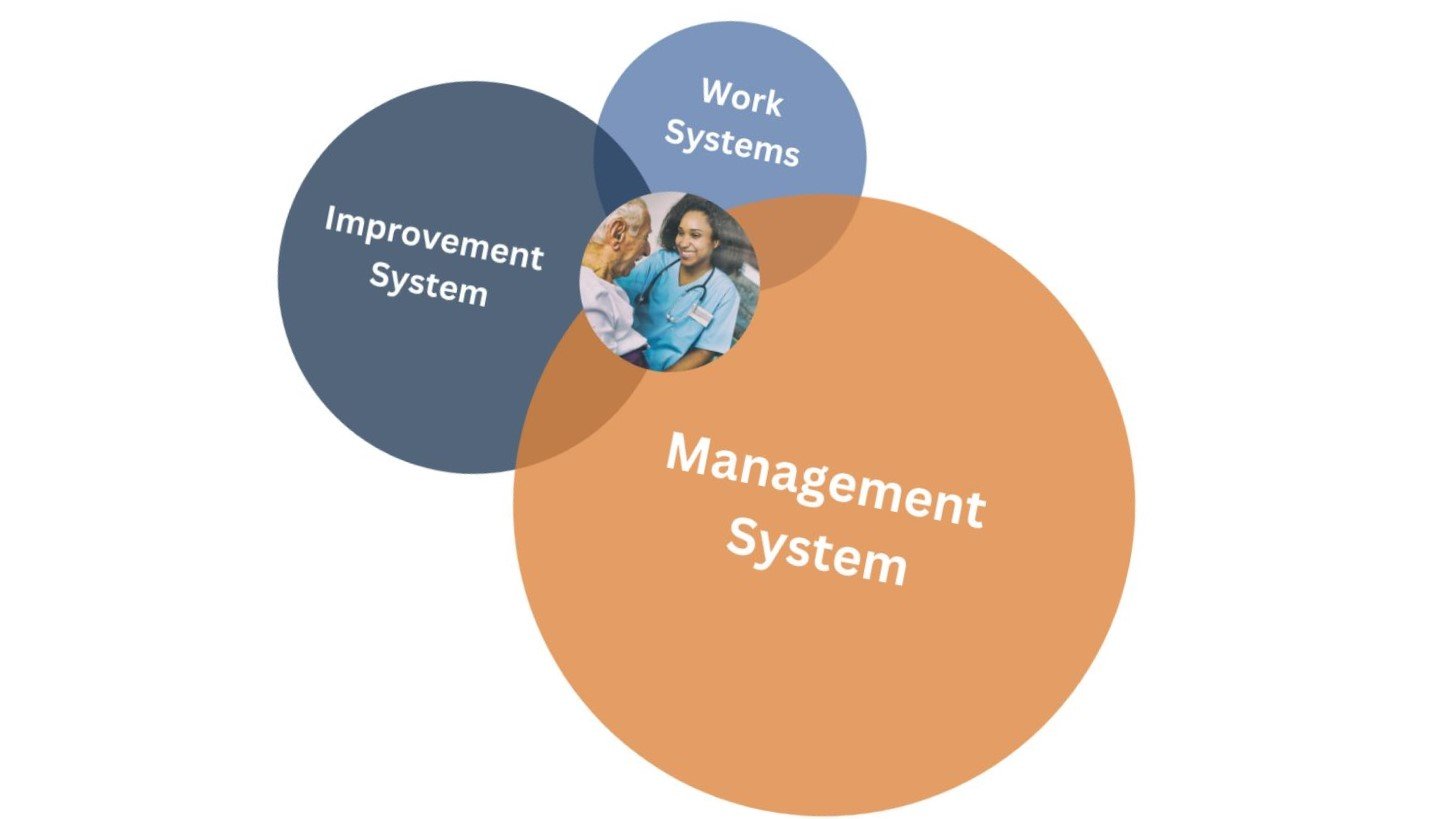The following blog post, part 1 of 3, summarizes Ken Segel’s keynote address at the annual CLEAR Research Symposium in Chicago on June 7, 2023.
This should be a moment of great momentum for the lean movement in American healthcare, but it isn’t.
The entire healthcare delivery system is in the throes of a financial crisis related to workforce shortages, despite massive waitlists of patients needing care.
The Toyota Production System (TPS) has a perfectly aligned set of strengths to prevent or address the root causes of the current crisis – we can summarize them in its great respect and focus on flow and process via intensely supportive structures for front-line workers. Toyota used TPS to achieve double the productivity of the world standard, double the rate of innovation, at least double the quality and reliability of the world standard, and accelerated from there. Industry after industry was soon transformed with systematic applications of variations of TPS.
But the best health services research shows less impressive results. Apart from a few institutions that have gone most deeply with TPS and produced similar outperformance over a decade or so, lean health systems as a whole are outperforming their peers meaningfully, but only marginally compared to the scale of what the Toyota Production System makes possible. And even in this moment when it should be shining most brightly, the lean healthcare movement seems tired, like so many across the sector. Why?
We find the cause in HOW we are attempting to implement lean or TPS in healthcare.
Systems Imbalance
The first signs that we may have to rethink what healthcare sees as a complete model of TPS come from some well-informed observers. Jamie Bonini, the head of the Toyota Supplier Support Center, says flat out that we are not doing TPS in healthcare. Don Berwick, MD, in a recent keynote at the Baldrige Institute, noted that the true magic of TPS is still missing in healthcare operations, even in most organizations that think they are doing it. Josh Howell, the President of the Lean Enterprise Institute, pointed to a failing in many TPS implementations across industries in a February 2023 blog post called “Learning to Solve Problems by … wait for it … Actually Solving Problems.”
“To illustrate what had been happening: A problem would come up. The executives would huddle to discuss what would have helped them better detect the problem sooner, how they could better organize themselves, and how they could tackle it more effectively. Better KPIs? More frequent huddles? A revised agenda? They’d update their management system accordingly.
As 'good' as these mechanisms were, however, lost in the response was actually solving the problem in the work. So, while a management system was under construction, it was never tested. The work never changed. Therefore, whether the management system could fulfill its purpose remained unknown. What we had here was a meta-problem — a problem with our problem-solving approach.”
As Value Capture founding Chairman Paul O’Neill, Sr. taught us, if we aren’t observing immediate changes to the way work is done, you are heading down the wrong path!
Another aligned observation of current state of lean in healthcare came from a pretty powerful fresh set of eyes. During a shared teaching at a health system (when Value Capture first joined the Shingo Institute as an affiliate), Shingo President Ken Snyder talked about his and his team’s surprise when they came into supposedly “lean” healthcare systems. He mentioned just how little evidence of fundamental Shingo Guiding Principles and capability in the Shingo Model's Continuous Improvement dimension there were, notably Assure Quality at the Source, and Improve Flow and Pull. “We thought healthcare would be better at this already. Much better. We were surprised by the lack of maturity.” Ken could diagnose the major gap in framework and capability right away.
Where is the Work System Focus in Healthcare?
Here’s the key problem in lean healthcare implementations that we see: organizations almost ignoring the application of the principles to the work system and correspondingly overemphasizing the management system, which is being asked to function as the primary engine to try to achieve organizational goals in a sustainably excellent way.

Here’s why that’s a big problem. It’s the Work System that drives results. The Management System just sustains results.
The management system is vertical, not horizontal. The flow of care is horizontal, from one customer-supplier connection to the next, to the ultimate customer, the patient. The magic of TPS – the doubling of productivity – comes first and foremost from the complete integration of TPS principles applied to work design – the flow of care and supporting information and supplies. Then the work system must be supported and reinforced by an allied management system (see the final section of this post for our recent emphasis with clients on adjusting daily engagement systems to tie much more directly to the horizontal flows of work than they are at most health systems we see). If the work design doesn’t reflect the principles, you won’t get to ongoing excellence in everything you do.
How Did Healthcare Get Here?
To try to go deeper on this, I not only reflected on the last 24 years of my exposure to TPS and its interpreters in healthcare, but back to some of the fundamental basics.
David Mann, in Creating a Lean Culture, makes a fundamental point he assumes is true: “Leaders in a lean conversion typically and appropriately focus most of their attention on the design details of the physical production system.”
But that is not true for the last 10 years in healthcare.
Mann talks about two systems - LEAN PRODUCTION and LEAN MANAGEMENT. He ASSUMES all lean conversions are focused on transforming how work is done using the lean principles (batches to flow and 1x1, push to pull, real-time problem solving, etc.). So his book is about creating and operating the management system to preserve those work system gains. Otherwise, as he notes at one point, without the dramatic but fragile gains of the production system changes, how can you ask busy executives to want to do the extra work that disciplined Lean Daily Management requires?
Unfortunately, we’ve done almost nothing BUT the management system in healthcare for the last decade.
Can you show me one current full hospital, let alone a health system that has converted operations (the work system) to lean flow? Can you show me one place in healthcare where we have full LEAN PRODUCTION? You won’t be able to.
What happened?
ThedaCare and the other pioneers of lean daily management systems in healthcare moved toward a management system for a very sound reason. They had done the hard work of work system redesign using the principles, but found that their traditional management systems were then outmoded. The management systems didn’t integrate the principles and the crucial ingredients required to sustain problem solving and rapid improvement, which resulted in managers and staff being overwhelmed and unable to sustain gains. So they needed a lean daily management system to fully integrate with lean work redesign and the daily problem solving required to keep it stable and improving.
But here’s what happened at most health systems (and we were a part of it) for the next decade:
Leaders were more excited about grabbing a lean management system than they ever had been for supporting lean work redesign and having their operations truly and fully apply the TPS principles. They hadn’t done the core work, but they wanted to grab the next thing they thought would help.
And it’s easy to have sympathy. Not only is the TPS work design stuff hard, but the truth is, most health systems had only the most traditional form of management system if they had one at all, and lean daily management systems embed many good qualities, and do help. But lean management systems that are not integrated with work systems per the principles simply cannot move the numbers in the astonishing ways that TPS showed is possible.
How to Fix the Imbalance to Harness the Power of TPS
To fix this situation, there needs to be an obvious rebalancing among the work system, improvement system, and management system. We need to fundamentally make it about applying the principles in the work system – which is going to require a lot of rebuilding. The improvement and management systems support the flows. We’ve got to get that integration right.
In the health systems we support we are seeing great gains from re-emphasizing systemwide stability and driving the principles into the horizontal flow of value via the work systems across the organizations. These gains include 13% reductions in inpatient length of stay, sharp reductions in harm rates, 20% increases in MD productivity (in ambulatory as well as inpatient settings) and tens of millions of dollars of improved revenue and reduced cost falling to the bottom line.
To rebalance effectively, there are two other major weaknesses in the current dominant modes of “implementing lean” in healthcare that have to be addressed at the same time – making sure ownership rests with the operating leaders of the health system and not the performance excellence team, and simplifying our sometimes overcomplicated approach to lean implementations, which can make it harder for people to follow and to see what needs to be done to flow value.
In future posts, I’ll explore those two weaknesses and propose how those who know what’s possible with TPS principles as a system can adjust for much greater impact on the major problems of today and to win the future. In the meantime, take a look at your health system’s lean implementation and ask, “where are we out of balance?”


Submit a comment